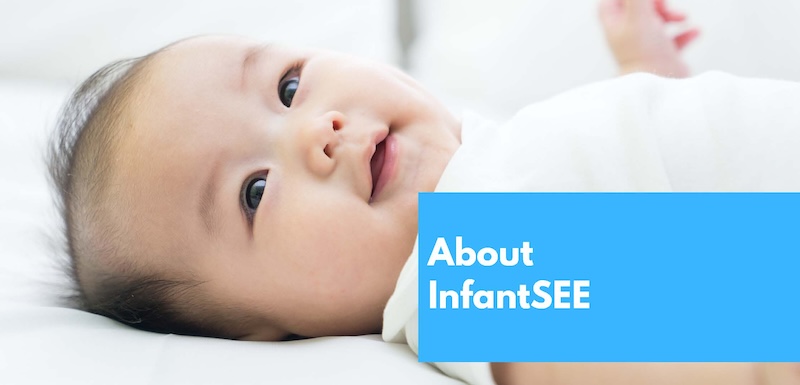InfantSEE ®
Establishing a Lifetime of Healthy Eyes and Vision
Cooing, sitting up, and crawling are all signs that a baby is growing. But, did you know that a baby’s vision has stages of development too? Signs marking vision development are often less noticeable even to parents, teachers, and other health care providers. That’s why the American Optometric Association recommends scheduling an infant’s first eye exam around six months of age, immediately after the eye undergoes rapid and profound changes and is therefore most vulnerable to interference with healthy development.
InfantSEE, a public health program, managed by Optometry Cares – The AOA Foundation, is designed to ensure that eye and vision care becomes an integral part of infant wellness care to improve a child’s quality of life. Under this program, AOA member optometrists provide a no-cost comprehensive eye and vision assessment for infants 6-12 months old regardless of a family’s income or access to insurance coverage.
While many parents may think that a vision screening is enough, a study funded by the National Eye Institute found that even the most sophisticated vision screening tools, administered by the most highly-trained vision screeners, will miss one-third of children with an eye or vision disorder.[i] InfantSEE provides early intervention using necessary specialized equipment and procedures – which are not available as part of most vision screenings. During an InfantSEE assessment a doctor of optometry will test for excessive of unequal amounts of nearsightedness, farsightedness, or astigmatism, eye movement ability, eye health problems, and discuss patient and family history. Comprehensive eye and vision care is important to detect problems early to ensure babies have the opportunity to develop the visual abilities they need to grow and learn.
